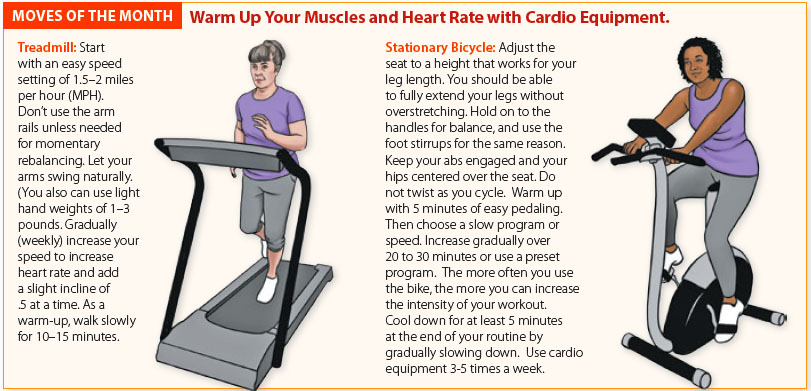Keep Up the Cardio for Good Heart Health
Being sedentary or inactive plays as much of a role in reducing life expectancy as smoking, drinking, and being obese. Conversely, numerous research studies show that the higher a person’s level of physical fitness, the less likely he or she is to die prematurely from cardiovascular disease. As a result, physical activity is a key protocol for preventing cardiovascular disease in adults.
Your best defense against heart disease is following a healthy diet and getting regular daily exercise. Cardio exercise—exercise that increases your heart rate and makes your blood pump faster—is considered the best for improving heart health.
Which Type Is Best for Women?
“The best type of cardio for a woman is the one that she enjoys the most and will include in her daily routine,” says Polly de Mille, director of sports performance at the Women’s Sports Medicine Center and Tisch Sports Performance Center at the Weill-Cornell-affiliated Hospital for Special Surgery.
Everyone has different interests, from equipment to classes to home workouts to being outdoors. “It may take some trial and error, but it’s worth exploring the endless options available to get your muscles and heart pumping; eventually you’ll find a form of exercise that resonates with you,” says de Mille.
How Does Cardio Help Your Heart?
Like all other muscles, your heart gets stronger when you work it, and when it has to work harder on a regular basis. “Your cardiovascular system benefits from regular exercise with a stronger heart and improvements in blood pressure and total circulation,” de Mille says.
How Much Should You Do?
The American College of Sports Medicine guidelines for adults recommend at least 150 minutes of moderateintensity aerobic activity or 75 minutes of vigorous-intensity aerobic activity per week, along with at least two days of muscle-strengthening. “Accumulate the minutes over the course of most, if not all, days of the week rather than trying to cram 150 minutes into one day,” de Mille says. Also, it doesn’t matter whether you do 10 minutes at a time or 30 minutes. Every minute counts.
Moderate intensity is when you can talk in full sentences but need to take more breaths than usual, and can sustain this effort level for a prolonged period. With vigorous exercise, you can only talk in short phrases and cannot hold a conversation, de Mille says. Moderate exercise intensity should be about 50 to 70 percent of your maximum heart rate, while vigorous exercise intensity should be at 70 to 85 percent.
“Pay attention to how you feel and adjust accordingly,” advises de Mille. In addition, “avoid using generalized recommendations for heart rate if you are taking any medications that affect the heart, such as beta-blockers.”

The post Keep Up the Cardio for Good Heart Health appeared first on University Health News.
Read Original Article: Keep Up the Cardio for Good Heart Health »

